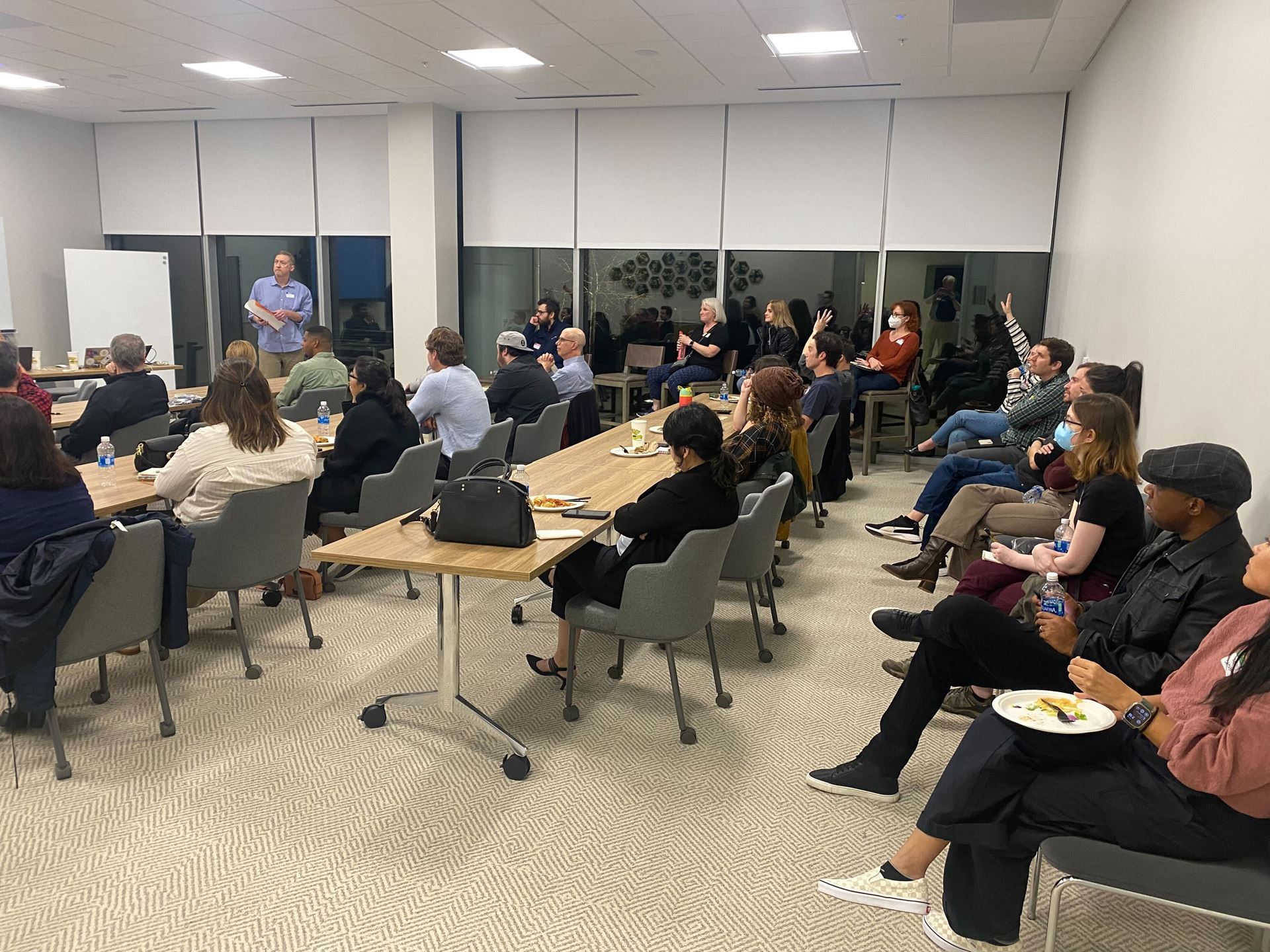Triangle UXPA is introducing a new feature: guest blogs by TriUXPA members who have insights to share! Our first guest blogger is Kyra Catabay, product designer at Micah Group. She attended the recent FluidMemory AI demo.
If you're a member of TriUXPA and would like to contribute a blog post, reach out and name your topic.

Generative AI is a hot topic, and forward thinking designers and researchers are figuring out its possible impact on our workflows, the industry, and how it might shape our digital and real worlds.
We had a packed room at the new TEKsystems office in Raleigh to demo FluidMemory—a cutting edge AI tool that streamlines once manual research processes. The demo was led by founder Piet Kruithof. We started off with an overview on AI, examples of prompt engineering, and learning more about FluidMemory.
What is generative AI?
Broadly, generative AI is a form of artificial intelligence that can create text and other types of context in response to a prompt. It sources from vast amounts of content available on the internet, comprehending language, patterns, styles, and structures from human communication.
ChatGPT is OpenAI’s GPT model for generating text in a conversational context. You can write messages and receive a response from the model, much like a conversation.
Generative AI can create new content and often serves as a jumping off point to help you get started. It can also serve as a way to automate tasks that were once very manual, a problem that FluidMemory solves for researchers.
A good prompt is gold
Piet started off the demo with an introduction into ChatGPT4.0 and prompt engineering. Creating a great prompt is essential for using generative AI. In the demo, we worked together to craft a prompt for buying a car in 35 accurate steps.
Here are some tips for crafting good AI prompts that we used during the demo:
-
Experiment and iterate: Try different prompts and iterate based on the model’s responses. Small changes can sometimes lead to big differences in responses.
-
Add context: Include background information or constraints to help the model understand your intention. Better context can lead to more accurate and useful responses.
-
Review and refine: Review the model’s response and refine your prompts based on the output. Save great prompts for later!
-
Ask the model to think step by step: Try asking the model to provide a detailed or step-by-step explanation. This can help with providing coherent and structured responses.
-
Specify format: If you want responses in a particular format (e.g. list, spreadsheet, or even word cloud), specify it in the prompt to guide the model’s output.
There have been instances of AI creating inaccurate or even fabricated responses (sometimes called “hallucinations”). As we use AI, we should be aware of its limitations and its potential to create unusual and incorrect responses. It’s important to double check the output when working with AI.
If you find a good prompt, don’t forget to save it for later!
FluidMemory: a solution inspired by short-term memory loss
As the founder of FluidMemory, Piet’s team is developing a software solution aimed at automating research, hypothesis testing, and presenting results for students and professionals alike. FluidMemory is powered by Google Cloud and utilizes ChatGPT along with GPT 4.0 to aid in data analysis.
It’s currently targeted for researchers (such as grad students), but its use case can definitely expand into other means and professions. It can provide a way for a researcher to capture, store, and keep information, as a compendium of data for current and projects. You might read a publication in grad school, and then use FluidMemory to recall that exact article and piece of needed information 15 years later. FluidMemory can also analyze vast amounts of the data that you’ve collected--saving you valuable time.
Piet spoke candidly about a short-term memory disability that led him to creating FluidMemory and his hope that FluidMemory can help other folks with these types of memory challenges in the future.
You can check out FluidMemory here:https://fluidmemory.ai/
